The Sachs Situation Sucks, Part 2
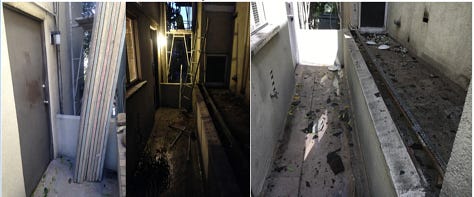
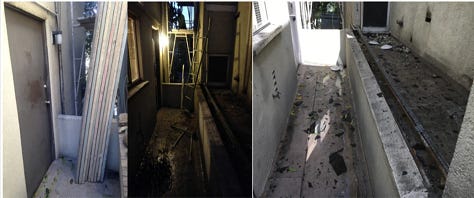


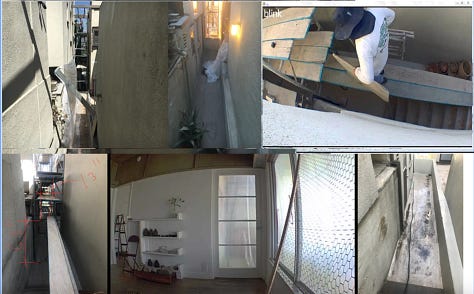

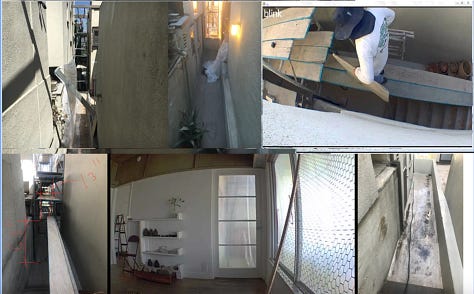

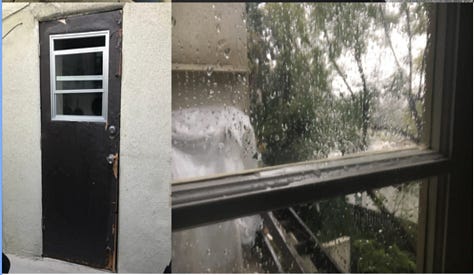
Owning real estate is a serious responsibility.
Owning rental property is an even bigger responsibility.
Owning an architecturally significant property, and an apartment complex at that, is a MUCH bigger responsibility, and is certainly not something to be taken lightly. Having managed (older but not historic) apartments, it's REALLY not for everyone.
The Sachs Apartments, a multifamily masterpiece from famed architect Rudolph Schindler, are also Los Angeles Historic-Cultural Monument #1118. Here's the landmark nomination from 2016.
They also happen to be under a Mills Act contract. In a nutshell, the Mills Act gives owners of historic properties a substantial tax break with the expectation that the tax savings will go towards maintaining the property's historic features. Mills Act contracts can require the owners to preserve those features. Here's the Sachs Apartments' Mills Act contract.
While a historic property has its own special challenges, it may very well be a potential red flag for current or prospective tenants if historic features are not being maintained properly. Who is more likely to fix an issue - someone with true pride of ownership, or someone who is more interested in your rent checks than in the integrity of the property? (Hint: it's's never the second guy.)
The tenant who reached out listed a multitude of issues with the condition of the complex. Some of them are structural, some concern preservation issues, and some are poorly done repairs. All bolding is mine:
There has been no structural retrofit. There have been structural changes, generally done without engineering or permit, but no structural retrofit of the foundations or for seismic. From the Mills Act Contract:
The scope of rehabilitation, restoration, and maintenance work is substantial: it includes structural retrofit, roof rehabilitation, gutter rehabilitation, window rehabilitation, MEP upgrades, insulating walls and ceilings, interior plaster repair, flooring rehabilitation, restoration of cabinetry, rehabilitation of trim and molding, tile rehabilitation, and painting the interior and exterior. The proposed scope of work is proposed to be completed by 2018.
(Ed. note: I am told the proposed scope of work was NOT, in fact, completed by 2018. Or 2019.)
Repair, rehabilitation & restoration of tile, flooring, interior plaster, cabinetry: These have often been replacements. Tile countertops have been replaced by Caesarstone. The cabinets in the kitchens and baths are metal drawer Euro-cabinets, often in new layouts, with simulated Schindler fronts. No original tile has been saved.
Sometimes the original Schindler cabinetry has been altered. For example, the living room shelving was altered in 1826 ½ for a built-in washer dryer.
The new stucco is not consistent with the original stucco. This is one of the high priority rehabilitation items in the Mills Act. I am not an expert but many people have told me the stucco should have been sanded. A friend came over a week ago. He has worked on these buildings his entire professional career. He was the project manager for the Kaufman House in Palm Springs, which in some ways is the project that began a new appreciation of the Modern in California. Finegold had actually asked him to work on the Sachs when Finegold began work. I pointed out the bad unrepaired stucco at my apartment, but he mentioned how bad the new stucco looked. He said it wasn’t original. He mentioned it would have been sanded. He said the thin coat of new plaster is the cheapest way to refinish stucco but prone to things like spider web cracking. Existing cracks will rapidly reappear. The permit language that Finegold and his architect write present it differently, calling it “NEW COLORCOAT PLASTER FINISH THROUGHOUT TO MATCH ORIGINAL EXTERIOR PLASTER FINISH.”
The Mills Act or HCM calls for restoration of the Sachs hand painted ceiling mural in the penthouse. I believe it is the number one item called out. It has been covered over with a plywood panel.
The number two item was for a microscopic paint study to be done to determine the original paint colors. As far as I know, this was not done. The interior walls are white. The exterior colors actually don’t match, the colors are off—one more purple, one more green—depending on which workman went to Benjamin Moore and which workman went to Dunn Edwards. (The effect has faded) I don’t believe the colors were determined by a historic study. Finegold told the realtor, “I have to live here.”
Exterior trim on the main (downhill) façade of the main building was casually altered. Schindler did a very deliberate, very careful design. It’s surprising given that he studied with Loos, but one of those fascinating contradictions and complexities in architecture. The Schindler design even involved custom-made wood windows, which were remade for the restoration. Workmen added trim below the windows where it does not belong. I am sure the owner and architect are aware but do not think it’s important.
There are 1x2 or 2x2 lattices from the 90’s on the “spider leg” trellising that Schinder used to tie the buildings together at the street. I find it very unfortunate. The lattice is there to shade courtyards and decks. It does not distinguish itself from the Shindler woodwork. It collects dirt.
Pieces of the trellising Schindler installed between 1811 and 1807 to tie them together were removed during the original phase of the work and never put back.
Maintenance: The Mills Act contract calls for “superior“ level of maintenance. The un-remodeled units are not maintained or maintained only when repairs are absolutely needed. The woodwork has never been painted. Damage caused by the construction work to un-remodeled units is not repaired. If housing makes them do a patch, they paint a splotch of paint over it, never the trade standard of painting break-line to break-line. Stucco, even new stucco, is chipped and broken. Waterproof surfaces are cut. Low voltage wires and gas lines are hanging.
They installed a new roof at our building but purposely did not do the roofs over our apartments.
The new roof looks terrible. Workmanship is bad. They roofed over part of the Schindler spider leg trellis work. The broke a support for the trellis and it is sagging. Stucco was broken and left unpatched.
Permits—much of the work is done without permits. The permits that are pulled consistently misrepresent the scope of work. The permit for 1826 Lucile, for example, was for $15K worth of construction. The value given in the Mills Act was $316K or $366K. The drawings are even more suspect. They do not show structural changes, call out for proper fire separations, ect, even though the units are largely gutted.
Finegold does not inform OHR of the work he is doing. I got a text in May 2018 asking me to approve the new garage door design. The two permits for the work at the time had been finaled. I did not know what Finegold meant or wanted. It was a mis-text. He was texting his architect. It became evident over the next several months as they worked on all the garages, redid the two story free-standing garage building and a complete overhaul and redesign of the exterior gardens. They had their Mills Act Contract but they never intended to contact OHR.
(Ed. note: OHR refers to the Office of Historic Resources.)
They cut up the floor diaphragms to level the floors in our building in the recent construction. These are serious changes in a hillside building in a seismic area. None of that work was on the drawings or engineered. It may be the most serious structural issue. The building next door cracked badly in the winter of 2019, a few months after they finished work on it. The city replaced the sewer in Edgecliffe. The heavy equipment rattled the buildings quite a bit for a month or so. The cracks appeared. The crack line extended up from foundation cracks to the windows, up a corner and around an followed the floor line across the building. My neighbor, an architect, said the stair insider “buckled.” It could be from similar floor work. I am not sure what caused it.
Appalling.
Having seen multiple collapsed apartment buildings in the aftermath of the 1994 earthquake, I, personally, am concerned about how the Sachs complex would hold up in a future quake.
Another tenant mentioned "Multiple times, HCIDLA inspectors were not allowed in the units (or under them) to see the work; once the inspector was kept off the property." (Can anyone clarify whether that is even legal?)
I was sent multiple pictures that I was told represent "Just a fraction of the damage and mess". You can see them yourself in the image gallery at the top of this entry.
1807-1817 Edgecliffe Drive and 1826-1830 3/4 Lucile Avenue, Silver Lake.
